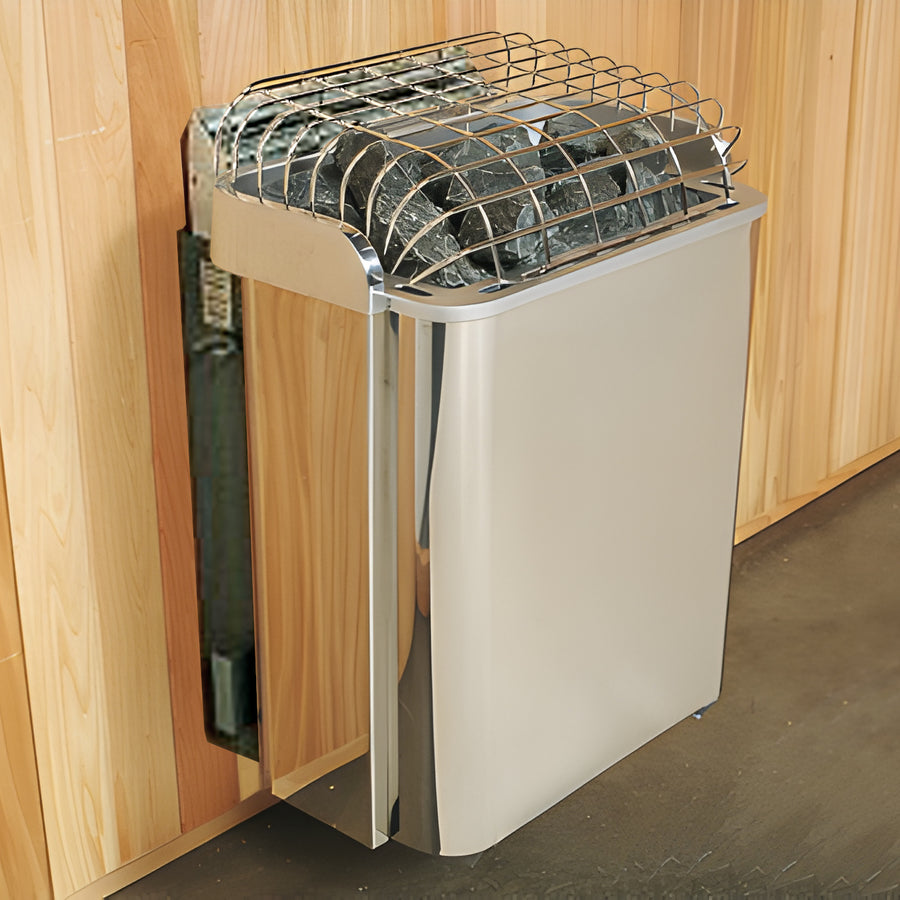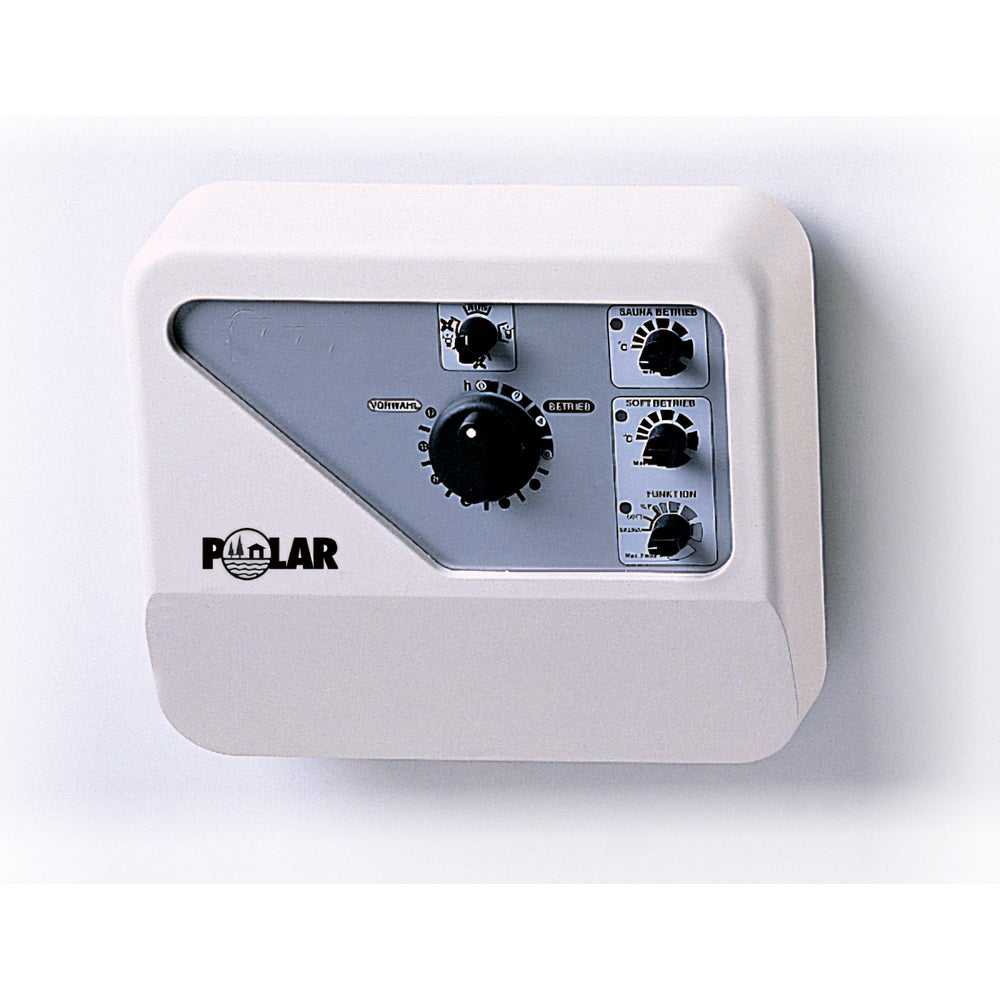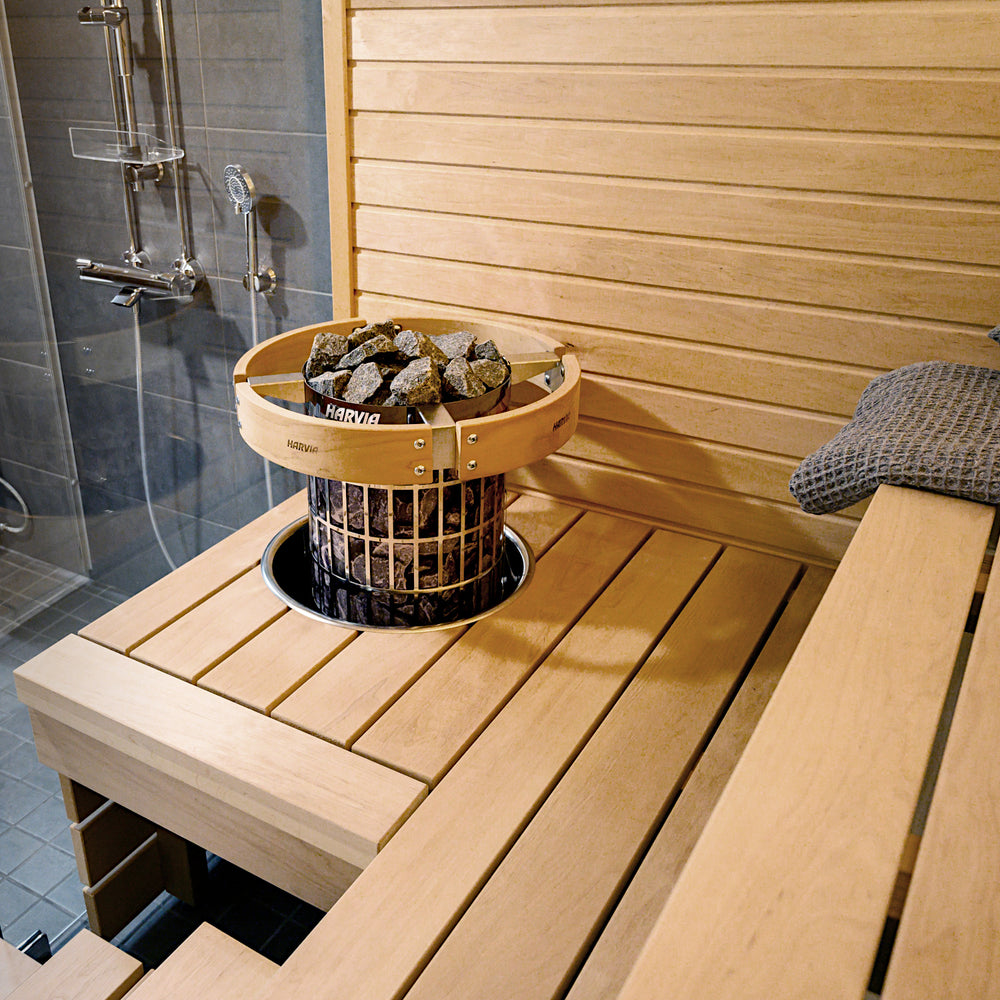FAQ sauna technical details
Should the sauna bathers feet be above the heater stones level?
This is a much discussed issue, and very correct to consider, with sauna heaters that have a closed body, stones inside, and the top open exposing only the top layer of stones there. Such types exist both in wood-fired heaters and electric heaters. The hot air from the heater makes a gradient layer from the stone level up. Additionally, if the sauna is poorly insulated, or has actual large gaps etc ventilation at the lower level, there is a lot of cooler air coming in that can make the heat layering worse. However, this is greatly resolved by having the benches at the correct height, well insulated walls and roof, and controlled ventilation. Additionally a solution can be a mechanical forced ventilation pushing air into the sauna from the ceiling level, like we have, to further even out the temperature gradient. And important thing is the heater type: Grid-type pillar heaters etc that are open from the sides will heat the sauna air at a much lower level, and really take away that need to raise the benches above the top of the heater.
A great sauna can be made into many various spaces that may have various constraints, and for example a high inside height of the sauna in many cases is not possible to do, while would be ideal, and the sauna will work fine without having it.
Is heat stratification (layering) reduced with open grid heaters?
It is important to understand that the sauna heater mostly heats the air of the sauna by air passing through the heater. If the heater outer casing is closed, the hot air escapes at the top of the heater, and the stratification, thermal layer, tends to form at that level. The open grid heaters are typically floor standing models. Due to the open grid heaters typically being tall, the resistors inside are also long and span from near the floor to near the top of the heater. So as there is no closed casing, hot air escapes from the sides as well, and already at very low level. Thus the thermal layering is greatly reduced.
Is the löyly (sauna steam from the stones) quality better in open grid heaters?
Löyly is the name of the hot water vapour evaporated from the hot rocks. The difference between closed and open grid heaters is that in a closed heater the rocks tend to become hotter especially at the top level as all hot air comes up through the heater and past the top layer of stones, where in an open heater the hot air escapes in all directions, and there is less of a hot spot at the top. Water poured on stones then hits either really hot stones or bit milder hot, and this makes a difference in the vapour droplet size, so the vapour is "dry" or "moist". Moist löyly feels softer and more tolerable, where dry löyly feels stingy and more agressive. But this is a matter of preference and many sauna enthusiasts wish to have dry steam. The quality of steam is greatly effected by the quantity of stones. If there are not a lot of stones, they won't give consistent löyly as they cool down, but they might be really hot in the beginning. Where as a large quantity of rocks, that all together have a great mass and surface area, and so even though the rocks temperature is not so high, the steam production ability will stay more consistent due to the stone mass.
How big should a sauna be to get bathers away from the radiant heat of the stove?
Most of the heating by a sauna heater comes from air passing through it, not from radiant heat. The amount of radiant heat is dependent on the heater model, and it is accounted for in the required safety distances to burning materials around the heater, that give an indication about it. If the required safety distances are big then one can presume the radiant heat to be significant, and consequently the heater requires more space in the sauna. We actually look at it from a safety point of view in our sauna designs. We don't want sauna bathers to have to go too near the sauna heater, to avoid anyone inadvertantly touching or leaning on the heater etc. From usability/ergonomics point of view, there should be enough space to move in and out of the sauna, without those risks. When that is in order, the heater is far away enough that there is no radiant heat to notice or worry about.
What is the ideal size of a sauna, and what size is too small?
Sauna dimensions are one of the key details in a successful sauna build. There is a lot written and and professed about the ideal sauna size, some are adamant a sauna should not be under a certain size. We claim there is no such thing as an ideal size of a sauna. It is a question of ergonomics, ventilation, insulation, correct heater sizing, and optimal bench dimensions and location. A small sauna for only two persons can have excellent sauna bathing quality, and a large sauna can be very poor in that quality. Actually, in many cases a large sauna is worse than a small one, much worse. A large sauna requires much more planning and expertise to achieve a good steam quality and even temperature, as often with poor execution there are cool corners, places where the sauna steam does not reach or where it goes too directly too quickly, not to go into problems with ventilation. An ideal sauna is dimensioned according to the location, the number of sauna bathers, the available electrical connection, and the budget. The functionality can then be engineered to be very good in that sauna size.







